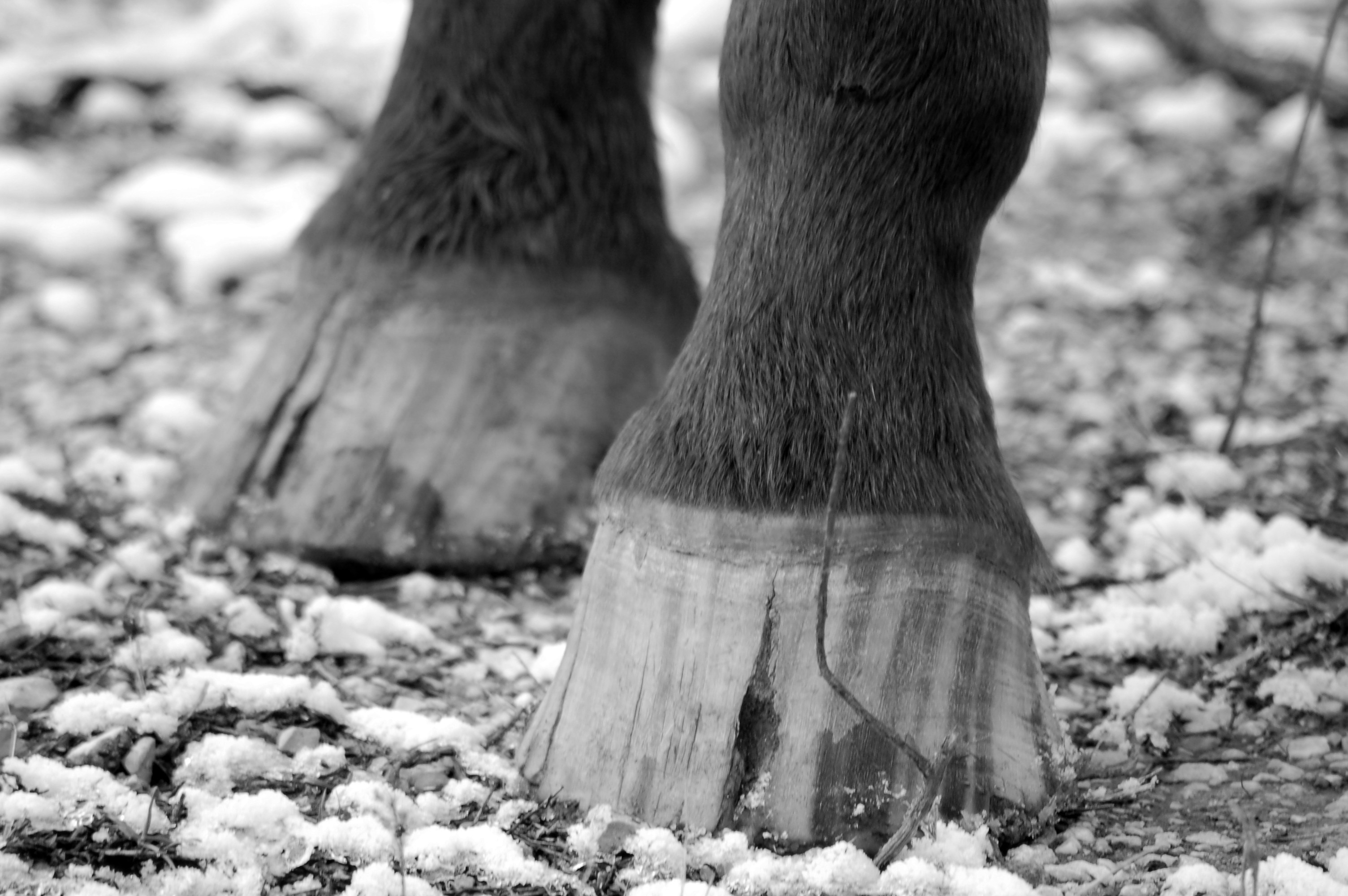Home > Horse Care > When to worry about a hoof crack
When to worry about a hoof crack
- November 7, 2023
- ⎯ Christine Barakat with Melinda Freckleton, DVM
Any defect in a hoof wall is cause for concern. The action required, however, depends on the nature of the crack. Here is a list of hoof crack descriptions ranked—generally speaking—from least to most worrisome:
Not-so-serious cracks

• Small, vertical cracks that start at ground level and extend upward an inch or less. These will typically be resolved with the next farrier visit and require no further action.
• Horizontal cracks an inch or less wide that originate at the coronary band and grow downward as the hoof does. Cracks like this are typically associated with a minor, healed trauma to the coronary band that briefly interrupted hoof production. As the hoof grows out, the crack migrates downward to eventually grow out entirely. Chances are no intervention will be needed during this process.
[Click here to learn how to make your horse’s hooves stronger.]
More worrisome defects
• Vertical cracks at the bottom of the hoof that continue around the bottom of the foot to affect the sole. You’ll need to pick up the hoof and perhaps clean it a bit to look for this. If the crack appears to involve any structures other than the hoof wall, it could become a more significant issue. Mention this to your farrier and veterinarian. Then keep a close watch out for signs that it may be more than just a superficial defect.
• Long, persistent vertical cracks. Cracks that extend more than an inch up the hoof and never seem to grow out and go away can be sign of a chronically unbalanced hoof. Even if the crack is thin and stable, work with your farrier to identify the cause. You’ll also want to determine if a new approach to trimming and shoeing might be needed.
Serious concerns
• Cracks that spread wider with each step, bleed or are associated with lameness. A crack with any of these characteristics is cause for an immediate call to your veterinarian and farrier. A combined effort from those two professionals can typically resolve most problems, but the longer it waits, the more damage will be done.
This article first appeared in EQUUS issue #464
Don’t miss out! With the free weekly EQUUS newsletter, you’ll get the latest horse health information delivered right to your in basket! If you’re not already receiving the EQUUS newsletter, click here to sign up. It’s *free*!





